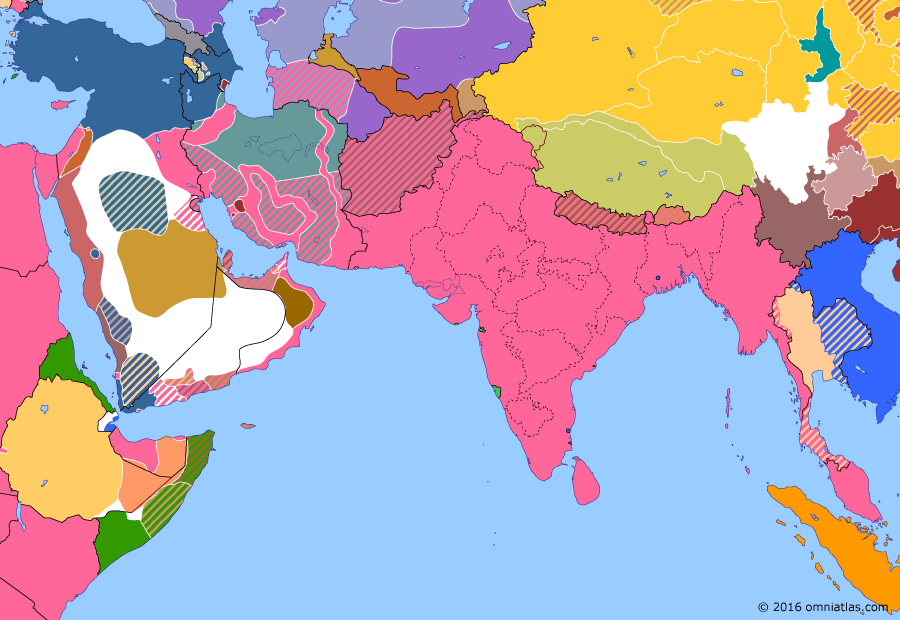Southern Asia 1918: Capture of Damascus
5 October 1918
5 Oct 1918
Fall of the Ottoman Empire
1880–1914 Pax Britannica
1914–1917 Great War in the Middle East
1917–1918 Fall of the Ottoman Empire
1918–1923 Anglo-French Overreach
1923–1934 Rising Nationalism
1934–1940 Arrival of the New Order
1940–1941 World War II: The Middle Eastern Theater
1941–1945 World War II: The South-East Asian Theater
1945–pres Independence
Capture of Damascus
7 Nov 1917 Russian Revolution
18 Dec 1917 Transcaucasian Commissariat
3 Mar 1918 Treaty of Brest-Litovsk
26 May 1918 Breakup of Transcaucasia
10 Jun 1918 German Caucasus Expedition
16 Aug 1918 Dunsterforce
5 Oct 1918 Capture of Damascus
30 Oct 1918 Armistice of Mudros
18 Nov 1918 Occupation of Constantinople
The long stand-off between the Allies and the Ottomans in Palestine was finally ended in September 1918 with the Battle of Megiddo. Advancing across the front, the British and Arab forces decisively defeated the Ottoman army, entering Damascus on 1 October. However these Anglo-Arab successes worried the French, who had been promised Syria by the British in the Sykes-Picot Agreement of 1916.
